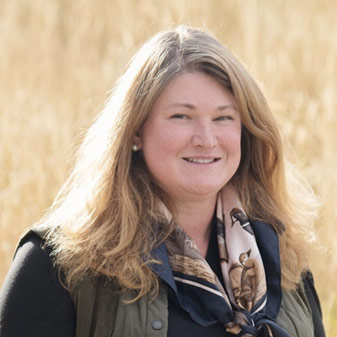This article was originally published in InsideSources.
The Biden administration recently released its recommendations to follow through on the president’s pledge to conserve 30 percent of America’s land and waters by 2030. The bold initiative, known as “America the Beautiful,” seeks to mitigate climate change and stem ecological degradation by more than doubling the amount of conservation lands in the United States.
While the lack of details around how the new administration will achieve its eco-moonshot continues to make some suspicious, last year’s passage of the Great American Outdoors Act demonstrated the broad, bipartisan, cross-cultural support for conservation in our country. For the initiative to unite Americans in a similar way, it will be crucial to get the details right. While the recently released recommendations voice the right sentiments, everything from who will guide the initiative to where ideas to implement it will be drawn from will be critical to its success.
The Biden administration started off in the right direction by recognizing the critical role farmers, ranchers, and the lands they steward play in safeguarding our environmental quality. A focus group of ranchers in the Greater Yellowstone Ecosystem convened by the Property and Environment Research Center in late 2019 revealed that the lack of public recognition for ranchers’ role in conservation was a sore point among participants. For all ranchers do to sequester carbon, maintain wildlife habitat, filter water, and provide other ecosystem services, they have too often been cast as environmental villains or outright ignored in conservation efforts.
The America the Beautiful initiative is sending a clear signal that farmers and ranchers stand alongside hunters, hikers, and Indigenous peoples as heroes in our country’s shared conservation story. It says that modern conservation is not about rolling over rural communities or leaving landowners behind to meet the demands of the politically powerful. Instead, it’s about cooperating with each other and reaching a consensus where everyone benefits.
But while the sentiments and values guiding the initiative place it on the right track, the administration must still execute it in ways more likely to unify than divide. How the federal government will do this remains unclear, and that understandably is a source of concern not only for some private landowners but also for some lawmakers.
In Washington, personnel is policy, and the administration can help put these concerns to rest by making sure the people in the Departments of the Interior and Agriculture who oversee America the Beautiful reflect its stated inclusive values. It is important that future hires include experienced people drawn from the communities and industries that stand to be most affected by the initiative. This will show that all voices are truly being heard.
The administration can also relax fears by consistently engaging the local communities, sectors, Indigenous peoples, conservationists, and environmentally conscious investors who will make the America the Beautiful initiative a success. At the highest levels, a new federal advisory committee made up of representatives from these constituencies could achieve this. Closer to the ground, the federal government should host regular town halls and listening sessions to collect input on how well the initiative is working at local levels, what could work better, and what adjustments might be made to keep the plan on track and Americans working together.
Finally, the administration should begin implementing the initiative by looking outside Washington, D.C. at the ways Americans are already working together to conserve the land they love. Multitudes of innovative models and practices already exist, such as the habitat leasing agreements to maintain wildlife migration corridors.
Under these kinds of agreements, conservation groups pay ranchers and other landowners a fee to help offset the property, forage, and other damages wildlife can cause while present on private lands. In return landowners agree not to haze the animals, thereby maintaining natural migratory paths. Private and local programs like these are ripe for encouragement and replication by federal agencies.
Every American depends on a healthy environment for their well-being. In an era where there is much disagreement and acrimony, the desire to conserve our country’s natural wonders, sacred spaces, and working lands is a point of consensus. President Biden’s America the Beautiful initiative is an opportunity for all of us to work together to achieve this common goal.




